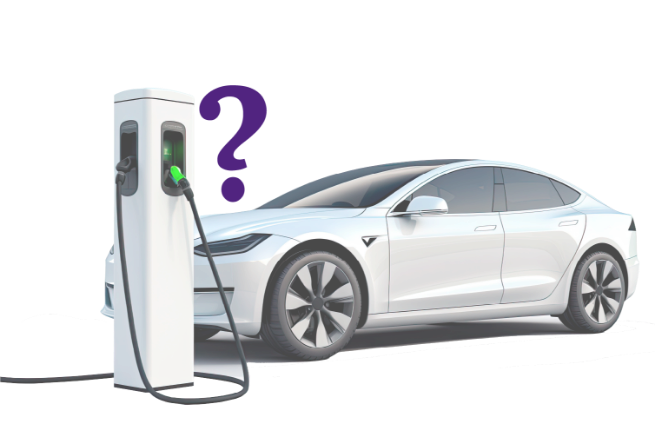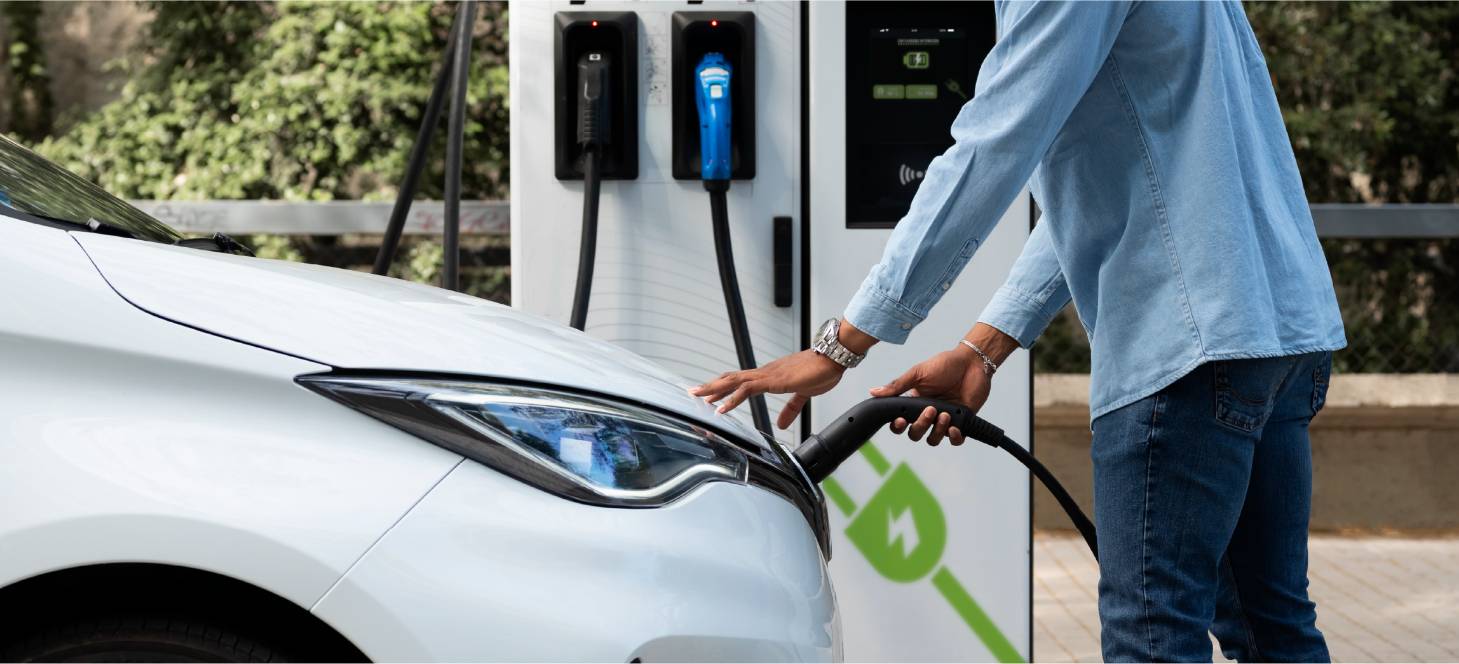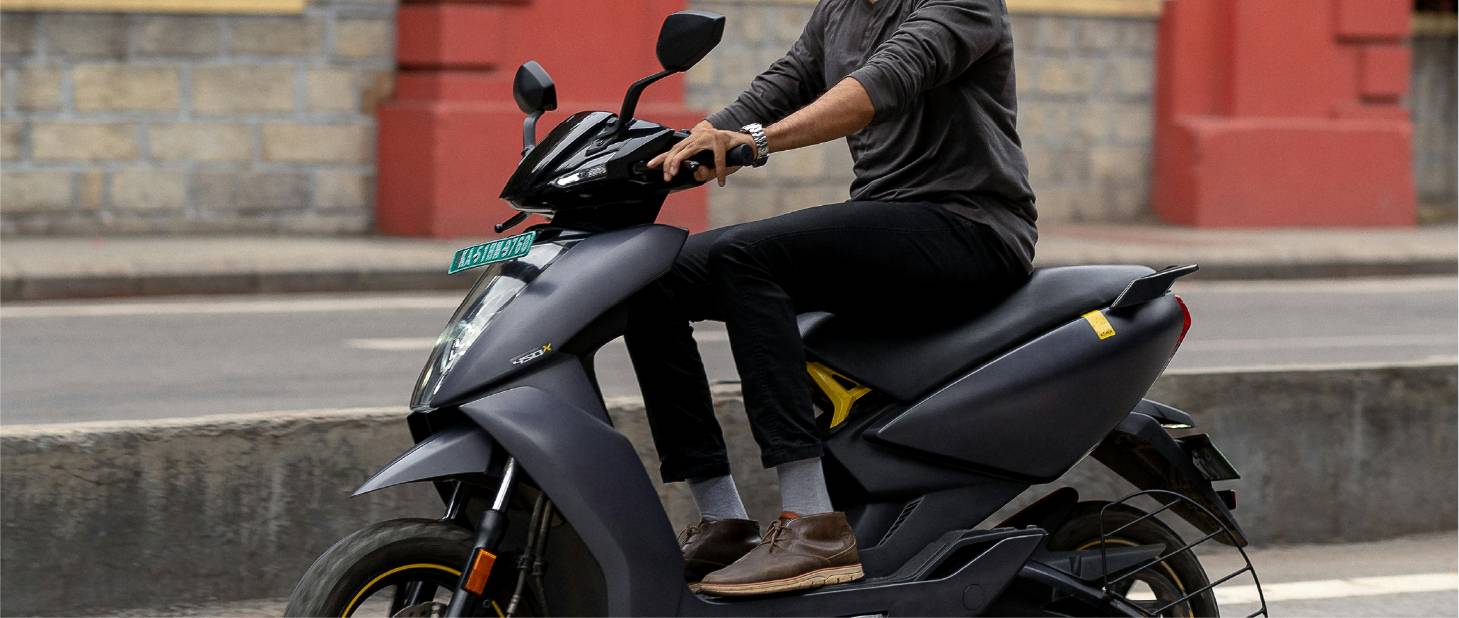Find the programme that meets your requirements and aspirations.
Apply now A newsletter by SPJIMR WISE Tech
A newsletter by SPJIMR WISE Tech
- SPJIMR
- Wise Innovation Studio for Emerging Technologies (WISE Tech)
- Quest
- Volume 1
- Edition 2
Volume 1 | Edition 2 | November 23, 2024
Quest examines innovation, technology adoption, and societal impact through a multidimensional Ethics-Responsibility-Sustainability (ERS) lens. A contemporary innovation-related event or trend in society triggers each narrative, be it an article, a case study, or an interview story. In response, the narrative raises a thought-provoking ERS question on the consequences of that event or trend in the future and initiates a discussion on what that may imply for managers and policymakers across a spectrum of businesses—from start-ups to large corporates.


What role will hybrids play in the future as
India gears towards wider EV adoption?
Article
While in FY 2023-24, ~89,500 hybrids were sold in India compared to 99,000 EVs1, between October 2023 and April 2024, 52,500 hybrids were sold compared to 48,000 EVs.
This Indian market trend aligns with global patterns. In 2023, the global sales of hybrids reached 1.4 million units, exceeding the 1.1 million EVs sold, emphasising hybrids’ continued popularity as a transitional technology in the shift toward cleaner transportation2.

By the end of 2025, out of
the 85 million hybrids plus
EVs expected to be on the
road, 73% will be EVs
and 27% will be hybrids5.
Will this trend continue despite all the focus on EVs?
Well, the tipping point towards wider EV adoption appears to be closer than estimated. Gartner’s latest October 2024 report predicts that by the end of 2025, India will have 3,70,000 EVs and 1,29,500 hybrids on its roads, reflecting robust growth in EV adoption alongside sustained hybrid sales3. Even globally, EVs in use will total ~62 million by the end of 2025 and hybrids in use will total ~23 million4.
So, what role are hybrids playing in the evolving automobile landscape?
Hybrids are convenient and easier to adopt6.
Hybrids combine internal combustion engines with electric propulsion, offering extended range and eliminating range anxiety associated with EVs. They do not require external charging infrastructure, making them more convenient in areas with limited charging facilities. They also stand out for their fuel efficiency and versatility, leveraging both the existing fuel infrastructure and electric motor without solely depending on charging stations.
However, affordability is barely an advantage
hybrid can bank on in India.
The availability of hybrid models under 20 lakh is limited, with options like the Maruti Suzuki Grand Vitara, Toyota Urban Cruiser Hyryder, and Honda City Hybrid eHEV7. All the same, Tata Nexon EV is priced starting at ~ 15 lakh, making it one of the most affordable EVs in India. Recently, MG has also come up with EV Windsor in a subscription model.
The government has helped with the adoption. The GST on EVs has been lowered from 12% to 5%. The GST on chargers and charging stations for EVs has been reduced from 18% to 5%8. And the import duty for EVs priced over ~ 30 lakhs has been slashed from 70-100% to 15%9.
So, India is geared to increase EV adoption and revolutionise the transportation landscape.
Nevertheless, EVs have few hindrances towards
a wider adoption.

a) Multiple concerns around charging infrastructure:
This continues to be a key bottleneck. Looking at the current public charging infrastructure, a 2023 FICCI Report notes the highly uneven geographical distribution of India’s charging stations. 55% are concentrated in eight metropolitan cities10. Delhi NCR leads with 18% of the total, followed by Mumbai at 14%, Bangalore at 9%, and Chennai at 8%, with other metro areas comprising about 6%. The rest of India accounts for only 45% of the infrastructure.
Add to that—the average distance between charging stations on highways in India is between 100 and 150 kilometres whereas automotive experts recommend an optimal distance of 25 to 40 kilometres. According to a JD Power India survey conducted in 2023, 78% of potential EV buyers cited range anxiety as their primary concern11.
From the lens of charging station-to-vehicle ratio, as of 2023, India had one charging station per 135 EVs12. The International Energy Agency recommends a ratio of one charging station for every 10 EVs13.
So, there is a considerable way to go on the charging infrastructure front to support India’s ambitions for electric mobility… Here is a global comparison14:
| Country | Year | Charging stations |
|---|---|---|
| China | Till December 202315 Till July 2024 |
1.15 million 3.20 million |
| EU + EFTA UK |
Till December 202316 Till July 2024 |
375,000 906,535 |
| USA | Till December 202317 Till July 2024 |
140,000 181,118 |
b) Inconvenience due to long charging time with slow chargers:
According to the Bureau of Energy Efficiency, about 65% of the existing chargers are AC slow chargers (3.3 kW), which take six to eight hours to charge an EV18. Only 20% are AC fast chargers (7.4 kW), requiring three to four hours, and just 15% are DC fast chargers (50 kW), capable of charging an EV in 45 to 60 minutes. So, it doesn’t make sense for people to drive to charging stations to use slow chargers and return to collect their cars hours later. Moreover, given that DC fast chargers are significantly more expensive, with installation costs ranging from 15-20 lakhs compared to 1-2 lakhs for slow chargers, there is a considerable economic barrier to expanding this infrastructure quickly.

Gartner forecasts that by 2030,
automakers will enable the
recycling of 95% of batteries
from EVs to mitigate the risk of
raw material shortage21.
c) Battery and car costs due to limited battery manufacturing capacity:
India lags in domestic battery manufacturing, relying heavily on imports19. This raises concerns about future battery price hikes, especially considering the limited geographic sources of some raw materials. Gartner, Inc.’s October 2024 Report opines that with EV sales expected to rise year-over-year, a shortage of raw materials will not be easy to resolve. Nevertheless, a robust recycling effort to take advantage of materials in spent batteries and scrap from the manufacturing production process is underway. By 2030, automakers are expected to enable the recycling of 95% of batteries from EVs to mitigate the risk of raw material shortage. This, together with EU efforts to mandate battery recycling, could reduce the need for more mineral excavation20.
So, while the industry focuses on long-term solutions for raw material availability, the lack of large-scale domestic battery manufacturing is also a challenge for the adoption of EVs in India.
d) Limited product options:
A common issue is the absence of small and affordable EV car models. Large models and SUVs accounted for over 65% of total EV car sales22. This is when the Indian market is predominantly a small car market (think WagonR and Swift dotting the roads).
Come back later? Receive Quest in your inbox. >
Multi-stakeholder initiatives to drive EV
adoption are in full swing.
a) Government schemes for EVs:

On 29th September 2024, the
government replaced the FAME
Scheme with the PM Electric Drive
Revolution in Innovative Vehicle
Enhancement Scheme24 to subsidise
EV two-wheelers, three-wheelers,
buses, and trucks25.
Some of the government initiatives that have contributed to fostering EV demand in recent years are – the New Electric Vehicle Policy 2024, FAME Vehicles Scheme II, the National Electric Mobility Mission Plan, the National Mission on Transformative Mobility and Battery Storage, Production-Linked Incentive Scheme for Advanced Chemistry Cell manufacturing, tax benefits, and the Go Electric campaign. There is also a central nodal agency—the Bureau of Energy Efficiency—to guide infrastructure installation and streamline processes for charging station operators23.
India also supports the global EV30@30 campaign, which aims for at least 30% of new vehicle sales to be electric by 2030.

Goldman Sachs’s October 2024 report
states that solid-state batteries could
be a real game changer because the
technology can increase energy density
more materially, reduce costs, and is
slightly safer sans flammable liquid
electrolyte28.
b) Technological innovations to reduce battery costs:
Since EV batteries make up ~50%-70% of an EV’s cost, reducing their cost of production and price could make EVs more affordable for the general masses26. Alternatives to lithium-ion batteries used by EVs are underway and the prime contender for its replacement is a dual-carbon battery that is both cheaper and less toxic.
Research is also underway to intensify the energy density of batteries to save space thereby cutting costs with more simplified structures and increasing the energy of the battery at the same time27.
c) Expanding the charging stations network29:
India needs to accelerate the installation of fast-charging stations, especially along major highway corridors to support long-distance travel.
Experts in the renewable energy sector suggest innovative measures to create a sustainable charging infrastructure such as encouraging rooftop solar panels/ installations and integrating them with solar-powered EV charging stations30.
There could also be a concerted effort to mandate charging facilities in new residential complexes to ensure that EV charging is available where people live. Standardizing charging protocols and simplifying the permission process for setting up charging stations would also go a long way in making the process more efficient. Tax benefits for charging infrastructure providers and subsidies for such residential charging installations could encourage wider EV adoption.
UEI aka the Unified Energy Interface Alliance formed this April31 could be a game changer. In a UEI world, consumers could simply use a UEI app to find the nearest charger from any provider (such as Pulse Energy, Bolt, Kazam, ChargeZone, Sheru, Trinity, or Turbo), book a slot, and pay. Such interoperability within EV charging networks, and like initiatives, is expected to define the future of the EV landscape.
d) Global developments to phase out conventional cars:
The EU has formally approved a law32 whereby all new cars and vans sold in Europe must be zero-emission by 203533. California has adopted the Advanced Clean Cars II Rules34, also adopted by 16 other American states. By 2035, all new car and passenger truck sales will be zero-emission vehicles (ZEVs)35. Canada’s Electric Vehicle Availability Standard 2023 regulations require Canada’s auto manufacturers and importers to meet annual ZEV targets for light-duty sales of 20% by 2026, 60% by 2030, and 100% by 203536.
Tipping point on EV adoption

The debate is not on
whether but when EVs
will become the most
preferable choice for
the Indian consumer.
If we look at all these initiatives with the government and private players invested in EV’s wider adoption, the debate is not on whether but when EVs will become the most preferable choice for the Indian consumer. Even players like Maruti Suzuki which were perhaps betting that EV adoption was quite a while away and hence focused on hybrids. But now we hear that the first EV from Maruti Suzuki, the e-Vitara is expected to be unveiled in January 2025. And some like Tata are betting the tipping point towards EV is near, hence the focus on EV Nexon.
When will the tipping point come is hard to predict, but it would be a combination of visionary initiatives from the government, urgency shown in implementing these initiatives, market-driven technology breakthroughs, and a combination of all these playing out…which we can already see happening in the two-wheeler EV market.
Two-wheeler EVs setting a precedent
for a broader electric adoption

As of 2023-24, electric two-wheelers and electric three-wheelers were the main contributors, representing 94% of all EV sales (including cars) by units. So, unlike four-wheelers, electric two-wheelers are becoming a significant part of India’s green mobility landscape with urban consumers seeking easy-to-use, cost-effective, sustainable transport solutions for daily use.
Battery innovations in electric two-wheelers have shown a lot of promise. Many electric bikes and scooters can be charged at home using standard electrical outlets, reducing the dependency on public charging infrastructure. Moreover, some models come with portable batteries, which offer the flexibility of charging at home or the office, making them particularly convenient for urban commuters.
Catching the nuances of hybrids paving
the way for a wider EV adoption
When we look at industry trends where a large majority of players focus on a particular technology, and there is visionary capital to back innovation and research, disruptive economies of scale start happening. So, there is a lot of focus on EVs now. Is there that kind of technology research or capital backing hybrids? With EVs becoming more affordable, will hybrids follow the same trajectory and both go hand in hand? Or will hybrids hit the floor and EVs will become the first choice for consumers?


At what point of technological innovation
will EVs outpace hybrids, influencing India’s
complete shift towards green mobility?

Author of this edition: Ansha Gupta | | Postdoctoral researcher at SPJIMR WISE Tech
Sources
- Hybrids outpacing ‘costly’ EVs, The New Indian Express, 7th April 2024. https://tinyurl.com/ms5u5unn
- Are Hybrids Gaining Traction in the EV Era? Goken Global. https://tinyurl.com/4aub5cah
- Forecast: Electric Vehicle Shipments, Worldwide, 2023-2032, Gartner Inc., 24th September 2024. https://tinyurl.com/ycybbm9r
- Gartner forecasts 85 million electric vehicles will be on the road by end of 2025, Telematics Wire, 15th October 2024. https://tinyurl.com/54wtazu4
- Gartner Forecasts 85 million Electric Vehicles Will Be on the Road by End of 2025, Gartner Inc., 14th October 2024. https://tinyurl.com/54wtazu4
- EV race: Are hybrid vehicles getting in the faster lane? ET Online, 10th July 2024. https://tinyurl.com/yc7mcte5
- Hybrid Cars, Carwale. https://tinyurl.com/mr2fevtx
- EY Parthenon Electrifying Indian Mobility, PIB. 2022. https://tinyurl.com/5femaz3h
- Government approves E-Vehicle policy to Promote India as a Manufacturing Destination, Ministry of Heavy Industries, PIB Delhi, 15th March 2024. https://tinyurl.com/u3scwsvt
- FICCI Electric Vehicle Market Assessment 2023. https://tinyurl.com/36p7j3kk
- JD Power India Electric Vehicle Experience Study 2023. https://tinyurl.com/ywdd3nu4
- Society of Manufacturers of Electric Vehicles Data 2023. https://tinyurl.com/2ju62nun
- Trends in charging infrastructure, Global EV Outlook 2023, IEA. https://tinyurl.com/3ejfuvxm
- The state of Public EV Charging: China, Europe, and U.S. compared, EV Boosters, 19th August 2024. https://tinyurl.com/3jwceh3t
- China Electric Vehicle Charging Infrastructure Promotion Alliance reports.
- European Alternative Fuels Observatory, European Commission. https://tinyurl.com/y6s2kv72
- U.S. Department of Energy, Alternative Fuels Data Center. https://tinyurl.com/4rsujmuu
- Bureau of Energy Efficiency, Ministry of Power, Government of India. https://tinyurl.com/5n8bebht | Bureau of Energy Efficiency (BEE) Technical Standards 2023. https://tinyurl.com/2e6z9ejj
- EVs are cleaner than gas cars, but a growing share of Americans don’t believe it, NPR, 23rd September 2024. https://tinyurl.com/yve8sdyc
- Gartner Forecasts 85 million Electric Vehicles Will Be on the Road by End of 2025, Gartner Inc., 14th October 2024. https://tinyurl.com/54wtazu4
- Gartner Forecasts 85 million Electric Vehicles Will Be on the Road by End of 2025, Gartner Inc., 14th October 2024. https://tinyurl.com/54wtazu4
- Gartner Forecasts 85 million Electric Vehicles Will Be on the Road by End of 2025, Gartner Inc., 14th October 2024. https://tinyurl.com/54wtazu4
- What do India’s evolving EV charging station guidelines mean for operators? Down To Earth, 3rd July 2024. https://tinyurl.com/4ynpknm3
- PM E-DRIVE, Ministry of Heavy Industries, Government of India. 29th September 2024. https://tinyurl.com/y3aepcxc
- Govt launches PM E-Drive scheme to replace FAME, no subsidies for electric or hybrid cars, ET Online, 11th September 2024. https://tinyurl.com/mr2b5vnm
- Innovations in battery technology: Powering future of EVs, ET Auto, 15th January 2024. https://tinyurl.com/yc3bydj3
- Electric vehicle battery prices are expected to fall almost 50% by 2026, Goldman Sachs, 7th October 2024. https://tinyurl.com/5a6w9hza
- Electric vehicle battery prices are expected to fall almost 50% by 2026, Goldman Sachs, 7th October 2024. https://tinyurl.com/5a6w9hza
- Hybrids outpacing ‘costly’ EVs, The New Indian Express, 7th April 2024. https://tinyurl.com/ms5u5unn
- Switch to Electric Vehicle Charging Stations with Rooftop Solar Panel, Nimbus Solar Solutions, 8th August 2024. https://tinyurl.com/44yzmdad
- Charging network operators, energy co.s form Unified Energy Interface for interoperability, ET Auto, 19th April 2024. https://tinyurl.com/4x4c29v3
- Regulation Of The European Parliament And Of The Council amending Regulation (EU) 2019/631, Council of The European Union, 16th November 2022. https://tinyurl.com/2x8mydj3
- EU approves law banning sales of new petrol, diesel cars from 2035, S&P Global, 29th March 2023. https://tinyurl.com/yw5fbx7v
- California moves to accelerate to 100% new zero-emission vehicle sales by 2035, California Air Resources Board, 25th August 2022. https://tinyurl.com/2km4tbve
- California is strongly committed to phasing out conventional cars by 2035, Accelerating to Zero Coalition, 16th November 2022. https://tinyurl.com/2pbv8a3w
- Canada’s Electric Vehicle Availability Standard, Government of Canada, 19th December 2023. https://tinyurl.com/37su7c99
Email us at wisetech@spjimr.org. >
Coming soon…

NUTRACEUTICALS:
Did Dr Stephen think
it would come to this?
Upcoming editions of Quest

Is there a scope to reduce
Scope 3 emissions?
Gauging the role
of tech and policy

Slow on
Responsibility…
The rigged game
of Fast Fashion
Read our earlier editions

As energy drinks increasingly
become a part of lifestyle
choices, what are the moral
and social implications of this
largely unregulated category?

